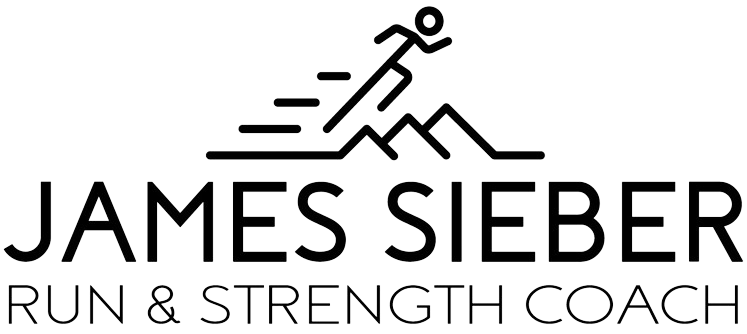
Understanding Easy Running: Benefits, Techniques, and Tips for New and Experienced Runners
We’ve all heard the phrase “run easy”, right? Even if you’re relatively new to the sport and have only Googled ‘how to run’, you’ve likely encountered advice like “you must run easy”, “run slow to run fast”, and “80/20”. While this sounds straightforward, there are nuances and complexities to easy running; it isn’t always as simple as it seems!
What is Easy Running
For a simple question, the answer isn’t straightforward.
There are plenty of ways people have tried to quantify this in the past. For the most part, I think of it as being your aerobic threshold, or AeT. This is the point at which you switch from using lipid oxidation (fats) for fuel to glycogen (carbohydrates). This would be referred to as zone 2, with zone 1 being reserved for recovery runs. However, if you run on hills, are new to running, or are just rocking out to Carly Rae Jepsen then you may find yourself in a more moderate effort.
From a more subjective, useful point of view, easy running is what your body and mind feels that day that doesn’t require concentration nor leave you feeling broken down at the end. You will be able to talk to whomever you are running with without breaking for too many extra breaths, and your breathing will be controlled and smooth. Easy running, and we aren’t talking long runs here, mostly won’t add to the level of stress in the body and shouldn’t elicit a sympathetic response, getting anxious, and should be a chance to enjoy the present moment that you are in. They don’t always feel great, but if you are going out with a pace objective, or even a heart rate objective, then you’re likely going to implode at some point in the near future.
The trick with easy running is that it fluctuates daily based on factors like: hydration status, fuel, environmental stress level (work, home, family), your physical and psychological health, the weather, even shoes. This is why pace just doesn’t work. Practising being in tune with your body is the best way to consistently feel what is easy for you on that specific day.
Easy should be relaxed, with no expectations and no ego. It should be an effort you can comfortably maintain without concentrating and holding a conversation.
Where Recovery Runs Fit Within Easy
Below your easy running intensity, in Zone 1 of a 5 Zone model, we find recovery runs. These are runs that, as the name suggests, aids in your body’s ability to recover from training. Essentially there is no too slow here, until you get to a point where you are changing how you run on a biomechanical level (your form changing). It will be different for all of us. For some, recovery will be a walk/hike due to your aerobic level. For those who are really efficient they will be able to run very slow, perhaps slower than someone not as trained, without a form change. As long as you finish these runs feeling better than when you started then you nailed it. Feel flat after? Then reduce the volume and/or slow down.
Why is Easy Running Relevant
Easy running does many wonderful things for you. It improves your aerobic capacity, makes you more efficient at using fat for energy (lipid metabolism), reduces stress, allows for active adaptation, improves hormone balance, increases the release of hormones that build performance and recovery (growth hormone) reduces injury risk, improves the muscles’ ability to generate energy (Mitochondrial density – also great for heart health!) and increases the body’s response to the trauma of harder running (capillary angiogenesis). In essence, you become really fit and strong.
How Does this Apply To You: New Runner
Does this sound like you? I’m not surprised. At the age of 67, my mum decided to take up running for the first time in her life and asked me for help. Excitedly, I said yes and we got to it. Getting started we had a very important conversation: running is tough on your body and easy running will take a while to build to. For now, running will feel more moderate most of the time. Yes, as you get fitter and improve your aerobic capacity plus the tolerance for the mechanical loading of running, we begin to develop easy running, but starting running is just a bit heinous. The reason for this is from an aerobic perspective your easy effort is likely a brisk walk. Therefore running requires a high level of concentration and is a more steady, moderate effort.
The important thing to focus on here, then, is that when you start out and run/walk 2, 3, 4 times per week, there will be plenty of non-running time for rest and active recovery. Because of this, runs don’t have to feel that easy and you can spend more time at the top of your zone 2, or aerobic threshold, and even into zone 3, more moderate effort running. The aerobic gains will continue to grow and you will start to grasp perception of different efforts, not solely walk or run.
As you gain traction in your running, experiment with running a bit less moderate on one of your runs and see how this feels. Good? Then try and run like that half the time and bit harder the rest. Then, after 8-12 weeks of gradually building true, easy running, this effort will come more naturally.
VERY IMPORTANT DISCLAIMER: This style of running only works for a short time and those doing low levels of running. Once you start running, not walk/run, 3 or more times per week then you need days that feel easier than others otherwise you’re in for a rough time. Think of it like an inverted U: more is better until you peak and rapidly crumble off the otherside. This is why having a coach when you start running is incredibly useful. Just ask my mum.
How Does this Apply To You: Experienced Runner
Once you’ve gone through the running onboarding process and are running multiple times per week, you really need to lock into keeping most of your running easy. By numbers, we are talking about 70% – 90% of your running. The easiest way to think about this is by time, not distance (in fact this is a good tip in general). As a (very) rough guideline:
< 5 hours per week = ~70-75% easy running
5-8 hours per week = ~75-80% easy running
8-10 hours per week = ~80-85% easy running
> 10 hours per week = 85-90% easy running
Thinking about how your weekly effort is structured will also depend on the stage of your season. For someone in a base building phase this percentage will be a lot higher than when they are in a specific phase for the 5k. Taking a big picture approach to your running, zooming out as far as you can, will aid in structuring this process.
What To Do With This Information
If you take one thing away from this please understand that this is a feeling and it’s not what your mate is doing or the professional on Strava. There will be days that your easy pace surprises you or that your heart rate gets a bit higher. There will be days that your easy pace is a minute slower per kilometre because life is a prick and you don’t have much capacity left in the tank. Either way, the benefit remains the same.
Just have fun, rock out, and if in doubt: slow down.
James
Do you have a question? Email me at james@jamessiebercoaching.com and I will be happy to help!


